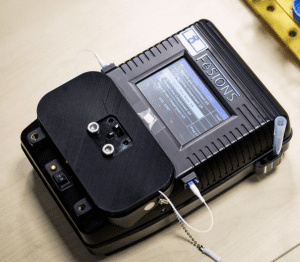
Agriculture
February 27, 2024
Solar-Powered Oxygen Delivery (SPO2)
Read SolutionImplemented by
Solar Oxygen

Updated on February 29, 2024
·Created on October 2, 2020
The Oxygen Reservoir System is an oxygen storage and filling vessel system.
The Oxygen Reservoir System is an oxygen storage vessel and a compressor pump. The vessel can be filled from any appropriate oxygen concentrator and stored for later use. The system can be used in the event of a power failure whereby the internal pressure of the vessel will drive the outflow of oxygen.
Target SDGs
SDG 3: Good Health and Well-Being
Market Suggested Retail Price
$2,300.00
Target Users (Target Impact Group)
Small and Medium-sized Enterprises, Public Sector Agencies
Distributors / Implementing Organizations
Diamedica
Countries
Benin, Burkina Faso, Cameroon, Central African Republic, Congo (Brazzaville), Congo (Kinshasa), Gambia, The, Ghana, Liberia, Madagascar, Malawi, Nigeria, Rwanda, Saudi Arabia, Sierra Leone, South Sudan, Togo, Yemen, Zambia
Manufacturing/Building Method
The product is designed and manufactured in the United Kingdom.
Intellectural Property Type
Patent
User Provision Model
Interested users can email the manufacturer directly for a quote.
Distributions to Date Status
750 devices have been distributed to date Interview with designer, August 2020
Consumables
No
Power supply type
Compressor requires electricity to function and will accept mains power from 90-300 V
Indispensable equipment for function
No
Maintenance or calibration required by user at time of use? (Y/N)
No
Display Type
N/A
Gas Flow Range (L/min)
N/A
Pressure Range (cm H2O)
Internal reservoir pressure is 5 atm (75 psi)
Patient population (specify)
All
Design Specifications
The system consists of two parts: (1) a compressor pump and (2) storage vessels. The compressor consists of a 12 V pump that can be powered from electrical sources between 85 - 290 V. The compressor has three connection ports: inlet from the oxygen concentrator, outlet to the vessel, and the mains power lead connector.
There are two reservoir vessels: a 100 L capacity vessel and a 20 L capacity vessel. The vessels are filled from an oxygen concentrator using a compressor pump, and the oxygen is stored at 5 bar for later use, and the vessels are certified to 10 bar. At 5 bar pressure, the 20 L vessel has a storage of 100 L of oxygen, and the 100 L vessel has a storage of 500 L of oxygen. The vessels are made from aluminum and are cylindrical. The vessels come equipped with a quick release supply fitting and tube. Using an 8 L/min oxygen concentrator, the small vessel can be filled in 15 minutes and the large vessel can be filled in 60 minutes. The vessels can supply an outflow of oxygen until the internal vessel pressure reaches 1.2 bar, whereby an alarm will sound indicating the need to replace the oxygen supply and refill the vessel.
Product dimensions and weight for the 20 L vessel: 25 x 25 x 70 cm, 6 kg
Product dimensions and weight for the 100 L vessel: 40 x 40 x 105 cm, 13.5 kg
Technical Support
Provided by the manufacturer.
Replacement Components
Components will have to be replaced with wear. Components available for replacement can be found in the Oxygen Reservoir Systems product information
Lifecycle
At least 5 years. The first device was deployed 5 years ago and it is still functioning as required. Interview with designer, August 2020
Manufacturer Specified Performance Parameters
Manufacturer specified performance targets include low cost, usable in low/no power settings, easy to use.
Vetted Performance Status
Product testing in Sierra Leone had the following results:
Safety
The compressor pump has several safety features: an overpressure cutoff, flow restrictors to avoid over-demand from the concentrator, and a flame guard fire safety device.
Complementary Technical Systems
Diamedica sells a compressor pump that is compatible with the Oxygen Reservoir Systems and can be used for filling the vessels. The system has standardized adaptors allowing the system to be used with standard hospital equipment.
Academic Research and References
R. P. Rassool, B. A. Sobott, D. J. Peake, B. S. Mutetire, P. P. Moschovis, and J. F. Black, A low-pressure oxygen storage system for oxygen supply in low-resource settings, Respir. Care, vol. 62, no. 12, pp. 1582–1587, Dec. 2017, doi: 10.4187/respcare.05532.
D. McNeil, A Simple Way to Save Lives as Covid-19 Hits Poorer Nations., The New York Times, 2020.
M. Davies, A. Onwuzoo, and S. Mednick, “Fighting for breath: how the medical oxygen industry is failing African hospitals,” The Guardian, 2020.
S. R. C. Howie et al., Meeting oxygen needs in Africa: An options analysis from the Gambia,” Bull. World Health Organ., vol. 87, no. 10, pp. 763–771, Oct. 2009, doi: 10.2471/BLT.08.058370.
Diamedica, “Oxygen Reservoir Systems product information”. 2022
Saint John of God Hospital, “LOW PRESSURE OXYGEN SYSTEM POWERED BY SOLAR ENERGY FOR PAEDIATRIC USES“, 2020
Compliance with regulations
CE certified, ISO 13485 certified
Evaluation methods
The product and facility are evaluated according to ISO 13485 guidelines. Interview with designer, August 2020
Other Information
Winner of the 2017 AAGBI Award for Innovation in Anaesthesia, Critical Care, and Pain.

Agriculture
February 27, 2024
Implemented by
Solar Oxygen

Agriculture
March 8, 2024
Implemented by
Pacific Consolidated Industries

Agriculture
June 6, 2024

Agriculture
December 27, 2023
Implemented by
Aqus

Agriculture
November 30, 2024
Implemented by
KOKO Networks

Agriculture
June 7, 2024
Implemented by
Trice Imaging, Inc

Agriculture
June 22, 2024
Implemented by
The Okoa Project

Agriculture
January 24, 2024
Implemented by
Nanyang Technological University (NTU) Singapore

Agriculture
November 21, 2024
Implemented by
BriteLyt

Agriculture
January 2, 2024
Implemented by
Katadyn Group
Have thoughts on how we can improve?
Give Us Feedback